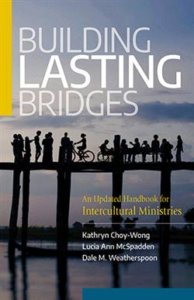How can church leaders embrace inclusivity and forge intercultural partnerships to chart a new course towards vibrant, equitable communities? Dale Weatherspoon shares four essential steps to foster inclusivity, from articulating the why to executing inclusive planning, and sustaining momentum for lasting change. Follow these steps as you seek to build bridges and elevate every voice in our shared quest for a better tomorrow.
All too often, groups organized to make their communities a better place to live are made up of members of only one racial or ethnic group. Or the initiating, planning, and organizing is done by one racial or ethnic group. Others are invited, but leadership and direction are never shared. How can we be sure of full participation and not have one racial or ethnic group dominate?
How do we start to build intentional bridges and make a difference in our communities? We begin by being inclusive and finding intercultural partnerships. The following four steps can help you develop communities that include many of the diverse groups in your city or region.
1. State your reasons for becoming more inclusive.
One reason for inclusive planning is that God loves the entire world and all the people whom God has created. Loving as God loves means respecting the identity, worth, distinct life experiences, and history of each person.
Second, in a genuine community, each person has a say in decisions affecting the well-being of the community. Following the practice of the earliest church in Acts, participative planning is essential. Those without a say in planning will not own the results of it.
Third, inclusiveness means seeing common concerns. Each group, as well as each individual within the group, will have particular concerns and agendas. Each will speak from his or her own perspective and will tend to define his or her problems their own way. Only as these positions are stated will it be possible for leaders to see connections between diverse agendas and concerns. Listening leads to being able to see what may be good for everyone.
Fourth, movement toward the good of all starts when everyone begins to speak and work together. As community leaders know, coalition building is the key to effectiveness. No group or person finally makes it on their own. Changes for the better in policies and practices of agencies, corporations, and governmental bodies require a coordinated effort.
2. Identify and invite leaders.
Identify major groupings that might be included (gender, race, ethnicity, class). Decide how wide a net you and your group are going to be able to cast. No matter how well-intentioned and effective you are, it will usually be impossible to include leaders of all the diverse groups in your community.
Contact leaders of groups well in advance. Ask persons you know from a given group to recommend somebody: “We are going to be doing a retreat: would you recommend somebody who can help us plan it?” If you have no contacts with a given group, call a minister from the group or write an email or letter to such a person. You might get in touch with a group like the NAACP or others that would have such contacts. Church Women United often has contacts with diverse groups. If there is a local community organization or regional association of community organizations, they also would have names of persons with whom you can be in touch. Your regional denominational offices may have lists of ministers and laypersons who would possibly come to such a meeting—so might the Ministers Alliance, Council of Churches, and other such bodies.
Choose a place for your meeting that is not narrowly identified with some particular group’s turf. A pleasant and attractive neutral location is a good place to begin.
Once you have the names of some contact persons, you may call, email, or write a letter. You may ask for recommendations of persons to attend your planning meeting. Be sure to express your hope for such a partnership.
Some people will probably respond. Talk to them in person or by phone. Get their names and addresses. Find out who recommended them, extend the invitation to attend your meeting, and be clear about the time, place, and how to get there.
3. Get acquainted and plan the event or community service.
You have contacted prospective members of your planning committee well in advance. You have explained the reason that you are meeting. On the day of your meeting, you will end up with a somewhat diverse planning committee. Of course, some who promised to come won’t be there. You might end up with a smaller group than hoped. But that’s okay. You can start small; as interest increases, participation will increase.
Begin with the reason for the planning meeting. Ask the committee members to introduce themselves, say a little bit about why they responded to the invitation, and one thing they would like to see happen.
Start each meeting with helpful get-acquainted exercise or icebreakers. Allow time for people to share their stories. Serving food is an excellent way to break the ice. You can plan on having different ethnic foods and sharing stories about the foods.
Listen! Do what you can to create a safe climate, one in which people expect that they will listen to one another and say what they are thinking and feeling. Remember that you will be overcoming the attitude that says “I/we know what is best for everyone!” Instead, foster an attitude of recognizing that we don’t know what is best for others and are willing to listen and learn. Expect that each person will speak from a different perspective. Listening and then understanding what each person is feeling will help as you continue to meet. You will have times of great agreement and times of discomfort and even misunderstanding. Prepare to take action on what each person feels is important.
Take notes. Putting things up on a flip chart pad or a whiteboard is a good way to make sure that everyone can see what is being said. Taking notes on the substance of what the group communicates is helpful and recording the group’s decisions is very important. Don’t only record the decisions, but also record the names of the people who will accept responsibility and be accountable for the work.
After the meeting is over, review the minutes and notes and make sure a copy is sent or emailed to each person who attended the meeting. Then, decide among the participants who will be your leaders. Make sure the leaders represent the diversity of your group.
4. Keep your inclusive movement going.
Your leaders will coordinate the follow-up meetings. Within your group of leaders, prepare to meet separately and build trust. As leaders meet, deepen your understanding of the experiences, concerns, and issues affecting each person. Lift each one up in support and prayer.
As your group continues to meet, discover the connections between people, the diverse racial or ethnic groups, and the complexities within each group. Be patient. Make sure you acknowledge that participants will make mistakes and sometimes might unintentionally say something or do something that may be hurtful, prejudicial, or racist. When this happens, ask for forgiveness, and encourage the person offended or hurt to bring this up so everyone can learn from these mistakes. And when the group has accomplished this agreed-upon goal, celebrate, and have a party!
 Excerpted from Building Lasting Bridges: An Updated Handbook for Intercultural Ministries by Kathryn Choy-Wong, Lucia Ann McSpadden, Dale M. Weatherspoon, Judson Press, 2022. Used by permission. The book is available at Judson Press, Cokesbury, and Amazon.
Excerpted from Building Lasting Bridges: An Updated Handbook for Intercultural Ministries by Kathryn Choy-Wong, Lucia Ann McSpadden, Dale M. Weatherspoon, Judson Press, 2022. Used by permission. The book is available at Judson Press, Cokesbury, and Amazon.
Related Resources
- 4 Steps to Becoming a Cultural Detective by Lucia Ann McSpadden
- Building Inclusive Communities featuring Brandan Robertson — Leading Ideas Talks podcast video | Podcast audio version | In-depth interview
- Centering Marginalized Voices to Lead Change featuring Taylor Sit — Leading Ideas Talks podcast video | Podcast audio version | In-depth interview
- Listening: A Key Team Building Skill by Robert C. Crosby







